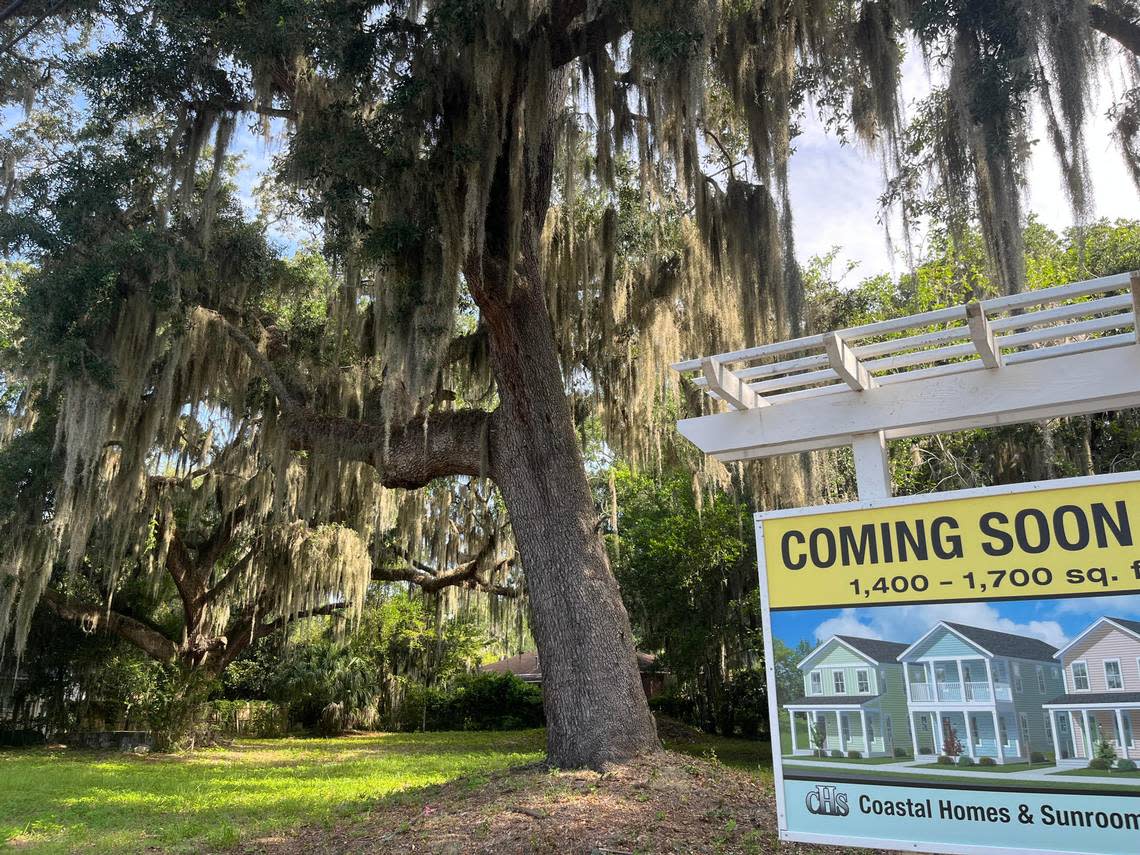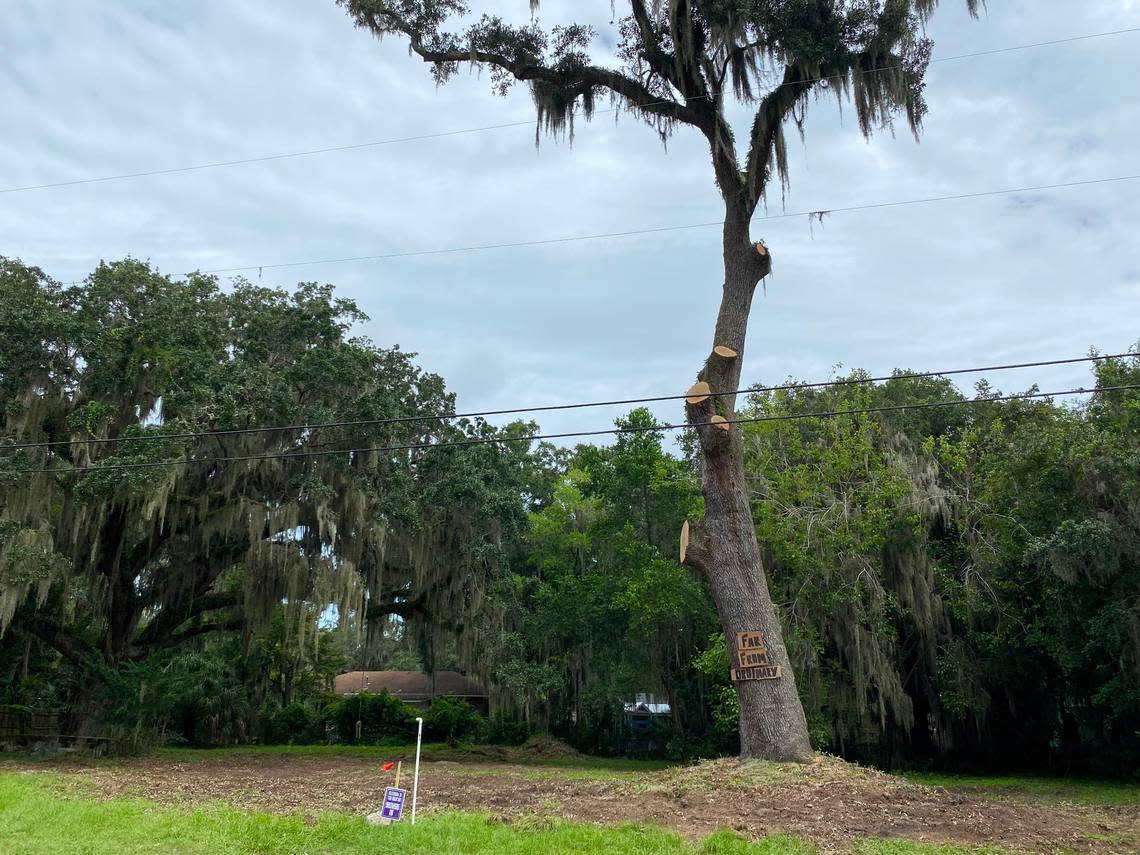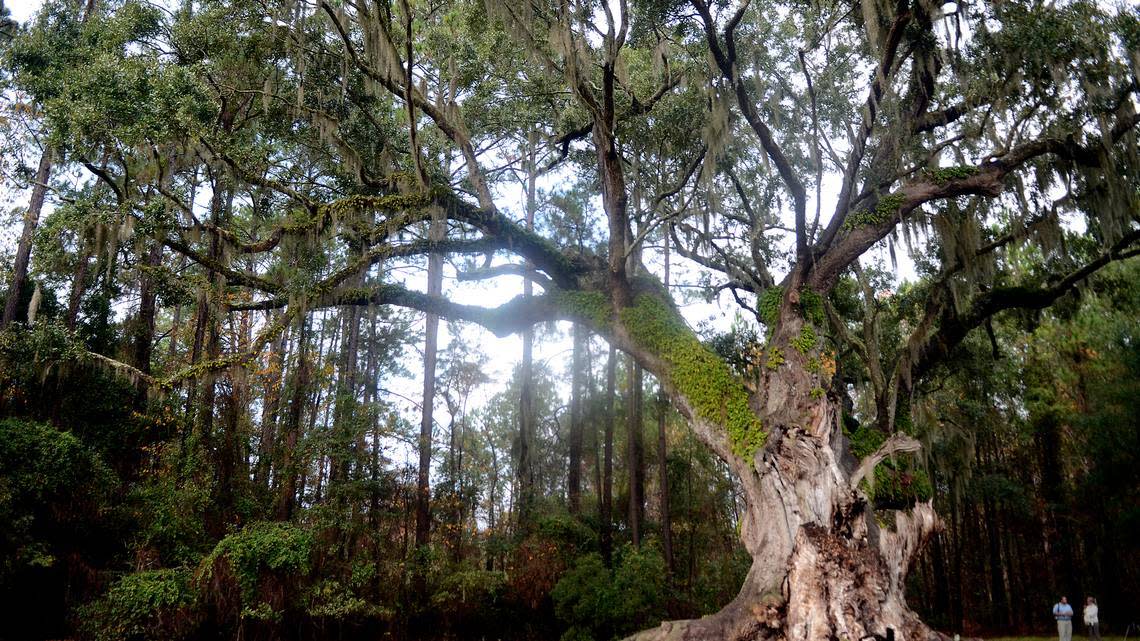Port Royal residents call for tree protections now. Here’s why the town isn’t quite ready yet
New tree protections in Port Royal — which a conservation organization says would be a model for other small towns to follow — have been delayed but aren’t dead.
In August, Elizabeth Bergmann filed an appeal of the town’s approval of a permit allowing a housing developer to remove two large live oak trees on 12th Street. That case was later settled in an agreement that saved one of the trees, but it sparked calls from residents for tougher tree-removal standards.
Bergmann and others on Wednesday urged the Town Council to act on the new tree regulations.
“We needed this six months ago,” she said.
Bergmann and others say the ordinance, aimed at reducing tree loss in a town known for its beautiful trees, can’t come soon enough because development is in the works that would harm more trees.
But Town Council members, saying they needed more time to study the details, tabled the ordinance until Jan. 11.
“I know you want us to pass it,” Mayor Joe DeVito said. “But I am absolutely feeling rushed. This is a very big document.”
DeVito said he’s struggling with how the major changes will affect a “homeowner maintaining their yard versus a developer.”
“It’s inappropriate,” Councilman Kevin Phillips added, “for us to be editing an ordinance as were voting on it.”
The council, instead, approved a moratorium on issuing new tree removal permits until a new tree ordinance is in place, preventing any additional trees from being removed in the meantime.

Modeled after Hilton Head’s ordinance
The proposed ordinance is modeled after rules on Hilton Head Island, which passed one of the nation’s most-restrictive tree ordinances in the 1980s that protect tree cover, diversity and understory.
“I think Port Royal would be setting a real significant model for the rest of the region, building on the model Hilton [Head] has set,” said Jessie White of the Coastal Conservation League, who served on a committee that worked on the plan.
Hilton Head’s capacity and resources are much larger than most of the municipalities in the Beaufort-Jasper Jasper region, White said, making Port Royal’s efforts notable.
“Port Royal is poised to really be the first small town that shows it’s possible to grow and protect your trees and sense of place,” White said.
As the ordinance is written now, developers and homeowners would need a tree permit to remove or prune any tree 6 inches in diameter or larger, Planning Director Noah Krepps said. A permit also would be required for removing underbrush on undeveloped lots.
Removing so-called landmark trees, which are at least 24 inches in diameter, or specimen trees, which are 12 inches are larger around, would not be allowed without a recommendation from a staff committee.
The Design Review Board would hear requests for exceptions.

If a tree is removed, it must be replaced
White, of the Coastal Conservation League, said Port Royal’s proposed ordinance stands out because developers would be forced to make all reasonable attempts to preserve trees. Requiring developers to pay a mitigation fee in order to remove trees, White said, is often the standard in communities, but Port Royal’s rules go beyond that.
“The presumed requirement is you are going to preserve all the trees on the site and develop around them,” White said. “If, for some reason, you need to remove some, then you need to replace the ones you remove. If for some reason you can’t replace them, you have to pay into the fund.”
If waivers are granted for removing trees, proposed mitigation fees would be $500 per caliper inch, which is the diameter of the trunk 6 inches above the ground. The current mitigation fee is $100.
Minimum standards for supplemental and replacement planting also are proposed. Fees would be charged if they can’t be met.
The controversy over the removal of the trees on 12th street wasn’t the only one in Port Royal this year.
Residents also objected to a plan by a developer planning to build apartments at 2900 Oak View Drive off of Parris Island Gateway overlooking Battery Creek, once known as Cherry Hill Plantation. It’s home to a 350-year-old live oak, the largest in Beaufort County.
Under the tree is the grave of Mary M. Pope, a former slave. That project has since been withdrawn and residents are hoping it can be purchased using public money available for conservation.

